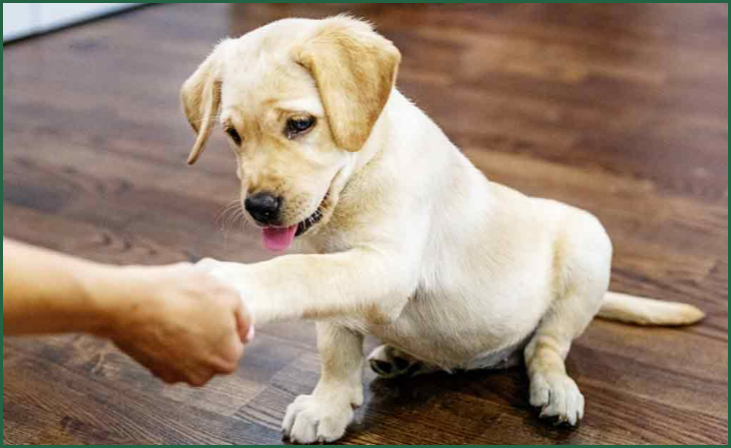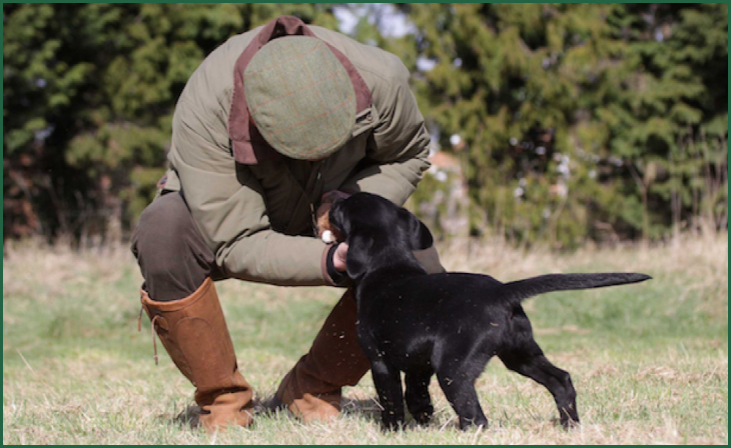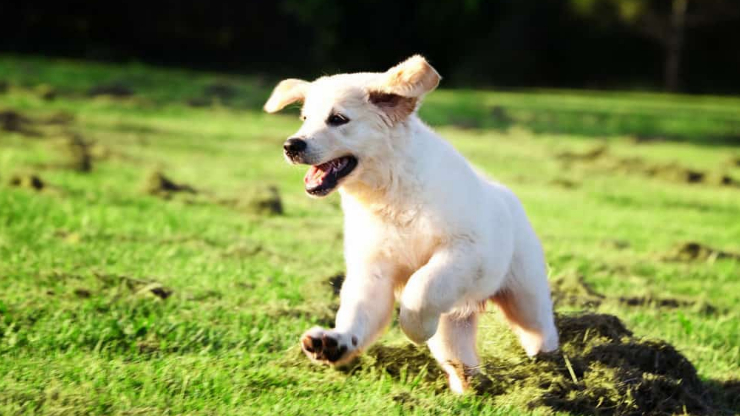How to Train a Labrador Puppy for Obedience – Welcoming a Labrador puppy into your home is an exciting adventure, but ensuring they grow into well-behaved companions requires dedication to obedience training. This guide aims to equip you with the essential tools and techniques to nurture a disciplined and responsive Labrador.
Obedience training not only fosters good behavior but also strengthens the bond between you and your furry friend. From foundational commands like “sit” and “stay” to mastering leash etiquette and addressing behavioral challenges, this comprehensive outline will provide a roadmap for success.
Emphasizing positive reinforcement and patience, this guide is designed to make the training process enjoyable and rewarding for both you and your Labrador, laying the groundwork for a harmonious lifelong partnership.
Table of Contents
ToggleImportance of obedience training
Obedience training is paramount for a Labrador puppy’s development, fostering a harmonious relationship between owner and pet. Beyond basic commands, this training instills discipline, ensuring the dog’s safety and the well-being of those around them.
It establishes clear communication channels, enhancing understanding between you and your Labrador. Obedience training bolsters socialization skills, reducing the likelihood of behavioral issues and fostering a well-adjusted, confident pet.
Additionally, a well-trained Labrador is more likely to integrate seamlessly into various environments, making outings and interactions enjoyable for both the owner and the dog. The investment in obedience training pays long-term dividends, creating a strong foundation for a loyal, responsive, and well-mannered companion throughout their life.
Also, Read – Tips for Effective Puppy Training
How to Train a Labrador Puppy for Obedience
Start Early

Start training your Labrador puppy early to take advantage of their natural ability to learn. Puppies are most receptive during their early months, making it an ideal time to instill good behaviors. Begin with basic commands like sit and stay, using positive reinforcement such as treats and praise.
Early training sets the foundation for a well-behaved adult dog. Keep sessions short and enjoyable, ensuring that the experience is positive for your puppy.
Consistency is key, so use the same commands and reward system, and involve all family members in the training process. This early investment in training will contribute to a lifelong relationship of obedience and companionship.
Positive Reinforcement
Utilize positive reinforcement to train your Labrador puppy effectively. Reward desired behaviors with treats, praise, and affection, reinforcing the connection between good conduct and positive outcomes.
Labradors respond well to encouragement, making them more likely to repeat behaviors that earn them rewards. Timing is crucial—offer immediate praise or treats to associate them directly with the desired action.
This positive approach fosters a strong bond between you and your puppy while creating a fun and engaging learning environment. Positive reinforcement not only accelerates learning but also enhances the overall training experience for both you and your Labrador.
Basic Commands
Teach your Labrador puppy essential commands for a well-behaved companion. Start with basic commands like sit, stay, come, and lie down. Consistency in command cues and positive reinforcement, such as treats or praise, is key.
Begin training in a quiet, distraction-free environment, gradually introducing challenges as your puppy progresses. Mastering these fundamental commands enhances communication, strengthens the bond between you and your Labrador, and ensures better control in various situations.
Keep training sessions short and engaging, building a foundation for a disciplined and responsive adult dog. Early command training establishes a framework for positive behavior and a harmonious relationship with your Labrador.
Also, Read – How to Massage a Puppy
Short Sessions
Keep Labrador puppy training sessions short and focused to maximize effectiveness. Puppies have brief attention spans, so aim for 5-10 minute sessions to prevent boredom or frustration. Prioritize quality over quantity, reinforcing positive behaviors with treats and praise.
By maintaining brevity, you keep the training experience enjoyable and avoid overwhelming your puppy. Frequent short sessions throughout the day allow for consistent learning without causing fatigue.
As your Labrador matures, you can gradually extend the duration of training sessions. This approach ensures that your puppy remains engaged, eager to learn, and associates training with positive experiences.
Don't just scroll, subscribe!
BuzzTrail's unique web-stories are the cure for boredom you've been waiting for.
Consistency is Key

Consistency is paramount in Labrador puppy training. Use the same commands and reward system across all family members to avoid confusion. Establish a routine for feeding, walks, and training sessions. Consistent expectations create a predictable environment, helping your Labrador understand what is expected of them.
Reinforce good behavior consistently with treats, praise, or affection. If rules are consistently enforced, your puppy will learn faster and be less likely to develop undesirable habits.
This uniform approach fosters a strong bond between you and your Labrador, promoting trust and understanding. Consistency establishes a reliable framework for your puppy’s learning and behavioral development.
Socialization
Prioritize socialization for your Labrador puppy to ensure a well-adjusted and confident adult dog. Introduce them to various people, environments, and other animals early on. Arrange controlled interactions to build positive associations and reduce fear or anxiety.
Encourage positive behaviors during encounters, rewarding your puppy with treats and praise. Gradually expose them to different stimuli, such as sounds and textures. This broad socialization helps prevent behavioral issues and fosters adaptability.
Regular positive social experiences contribute to a well-rounded, friendly, and outgoing Labrador. Make socialization a positive and enjoyable aspect of your puppy’s development for long-term behavioral benefits.
Leash Training
Mastering leash training is crucial for a well-behaved Labrador. Begin with short walks, rewarding your puppy for walking calmly beside you. Use a comfortable harness and a standard leash to avoid discomfort.
Encourage loose leash walking by stopping when they pull and rewarding them when the leash is slack. Be patient and consistent, gradually increasing the walk duration. Introduce distractions gradually to test their obedience.
Positive reinforcement, such as treats and praise, reinforces good leash behavior. Regular leash training not only ensures a pleasant walking experience but also promotes safety and control, creating a positive association between walks and good behavior.
Patience
Patience is vital in Labrador puppy training. Understand that puppies are learning and may not grasp commands immediately. Stay calm and composed, avoiding frustration. If mistakes occur, redirect your puppy to the correct behavior without punishment.
Each dog learns at its own pace, so be patient and celebrate small victories. Consistent, positive reinforcement yields better results over time. Recognize that training is a gradual process, and setbacks are natural.
Maintain a positive attitude, as your patience and encouragement will strengthen the bond with your Labrador. A patient approach ensures a positive learning experience, fostering a well-behaved and trusting companion in the long run.
Distraction-Free Environment
Create a distraction-free environment when training your Labrador puppy. Start in a quiet, controlled space to help them focus on learning commands. Minimize noise, other pets, and potential distractions.
As your puppy becomes proficient, gradually introduce controlled distractions to reinforce obedience in varied situations. This step-by-step approach allows for better concentration and understanding.
Positive reinforcement in a low-distraction setting establishes a solid foundation before progressing to more challenging environments. By beginning in a controlled space, you set your Labrador up for success, making training sessions more effective and enjoyable for both you and your puppy.
Professional Training Classes

Consider enrolling your Labrador puppy in professional obedience training classes. Professional trainers offer guidance, structure, and a controlled environment for effective learning. These classes provide socialization opportunities, exposing your puppy to new experiences and other dogs.
Trainers can address specific behavioral issues and tailor training to your Labrador’s needs. Additionally, the classes offer consistency and accountability, reinforcing commands in a group setting. Learning alongside other puppies enhances your dog’s social skills.
Professional training instills good behavior habits, contributing to a well-mannered and obedient adult Labrador. Invest in these classes for a positive and educational experience for both you and your puppy.
Conclusion
In conclusion, obedience training is the key to a fulfilling and cooperative relationship with your Labrador. By investing time and patience in teaching essential commands and behaviors, you not only enhance their safety and well-being but also strengthen the bond between you and your furry companion.
The benefits extend beyond the training sessions, creating a well-mannered and adaptable dog that enriches your daily life. Remember, consistency and positive reinforcement are the pillars of successful training, ensuring a lifetime of joyous companionship with your well-behaved Labrador.
FAQs
What are the essential supplies for Labrador puppy training?
What are the essential supplies for Labrador puppy training?
Collar, leash, treats, and toys are crucial. Choose treats your puppy loves for positive reinforcement.
How do I deal with a stubborn Labrador during training?
How do I deal with a stubborn Labrador during training?
Be patient and consistent. Break down commands into smaller steps and use high-value treats. Positive reinforcement is key.
How long should training sessions be?
How long should training sessions be?
Keep sessions short (5-10 minutes for puppies) to maintain their attention and enthusiasm. Multiple short sessions throughout the day are effective.

